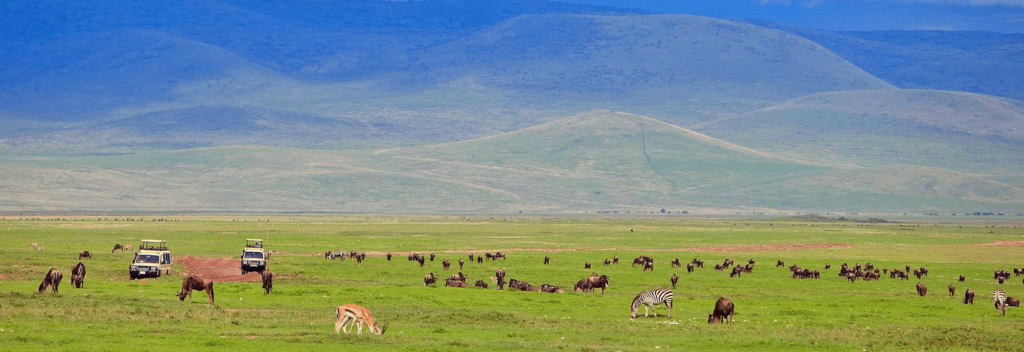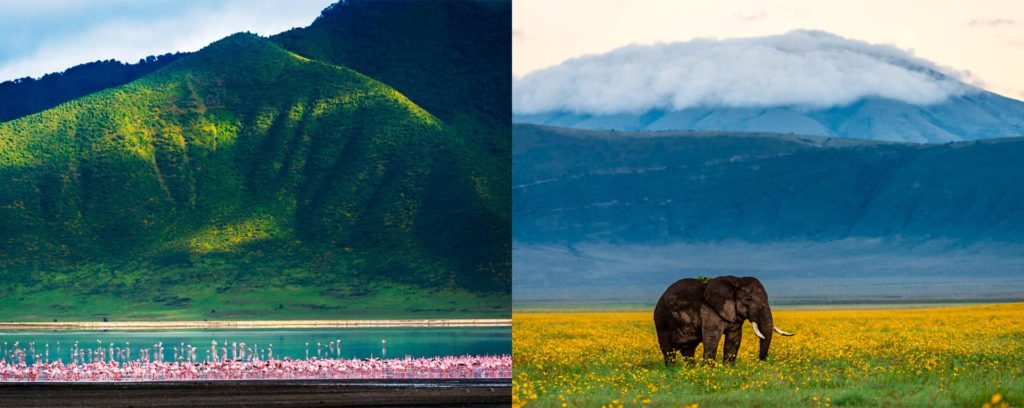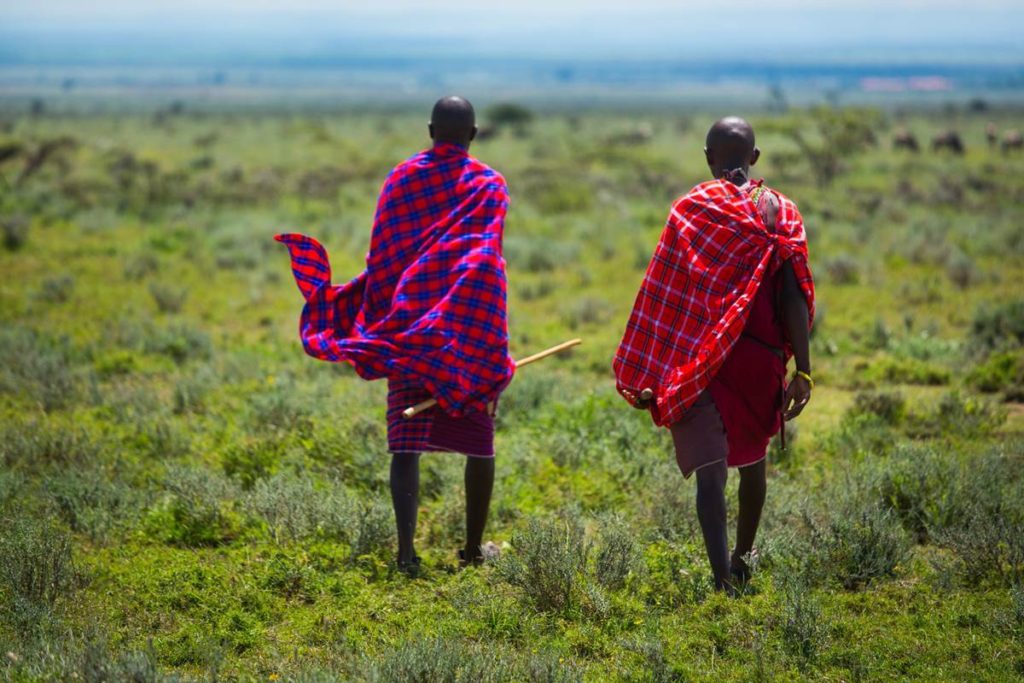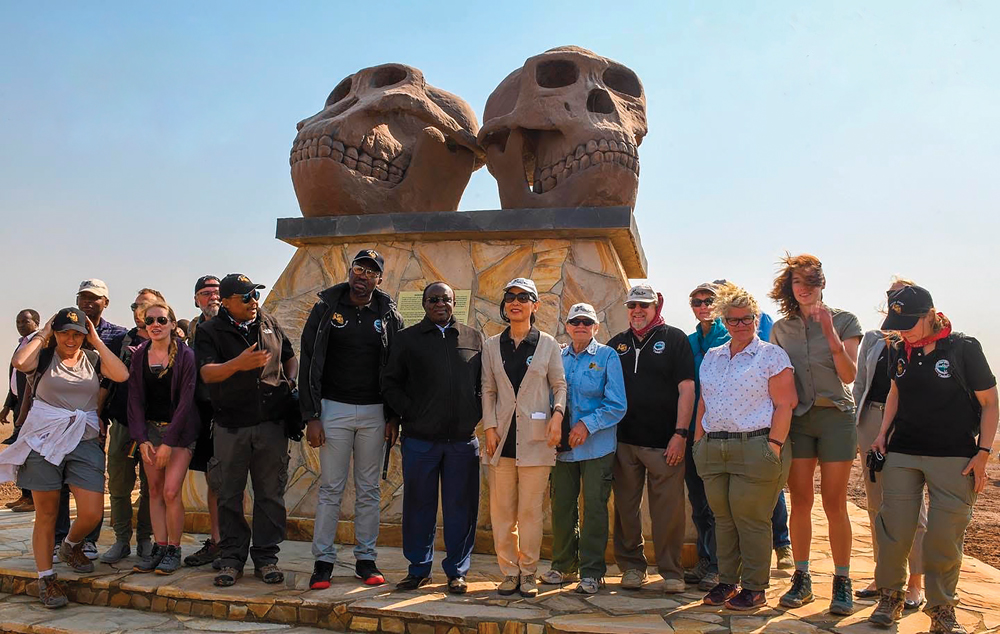Why Ngorongoro Conservation Area Is A Must-Visit In Tanzania.
Why Ngorongoro Conservation Area Is A Must-Visit In Tanzania : Although Serengeti National Park is the first safari destination that always comes to mind when people are planning their dream trip to Tanzania. Of course, the Great Migration and the Lion King location are two compelling arguments against leaving the Serengeti. However, Tanzania has a tone more to offer, and missing them would be a huge disappointment. The well-known Ngorongoro Conservation Area in particular. What makes Tanzania’s Ngorongoro Conservation Area a must-see, then? Ten explanations for this are as follows:

World Heritage Site.
Any ardent tourist would want to visit as many World Heritage Sites as they could, particularly if the location offers experiences that are unimaginably amazing. Such a site is Ngorongoro Conservation Area, which has been recognized as a UNESCO World Heritage Site since 1979. The magnificent Ngorongoro Crater, which is renowned for being the biggest intact and inactive volcanic caldera on Earth, is its primary feature. The Crater, which was created by a significant explosion and collapse some two to three million years ago, was recognized as one of Africa’s Seven Natural Wonders in 2015. It is also known as “the cradle of humanity” by some people.
The vast Ngorongoro Conservation Area, which is actually larger than it appears, is home to a multitude of globally threatened species as well as extraordinarily abundant wildlife. Since it provides important evidence of human evolution and the dynamics of the human-environment interaction, it has also been one of the hubs for in-depth archaeological research for more than eight decades.
Africa’s Garden Of Eden.
The most common association between the term “Ngorongoro Conservation Area” and the human brain is the well-known Ngorongoro Crater. Furthermore, you really have no excuse for that.
The magnificent Ngorongoro Crater, known as the Garden of Eden of Africa, is home to roughly 25,000 animals, including large mammals, four of the Big Five, and ungulates. Additionally, it’s among the best locations to see animals that are in grave danger of extinction, such as golden cats, black rhinos, and wild hunting dogs. Ngorongoro Crater, home to one of the densest known populations of Maasai lions, promises an exciting, adrenaline-filled game. In actuality, it facilitates the Great Migration, the greatest animal migration in history. You see, the wildebeest calving season takes place in the regions surrounding the Ngorongoro Crater and Ndutu. Thousands of baby wildebeests will be giving birth during this period, and a variety of opportunistic predators in stealth and killing modes will be visible.
Some have compared this natural wonder to a “mini Africa in a bowl” because of its splendour. “Imagine a bowl of an incredible landscape filled with just about every African animal you can think of,” as one traveler put it.

Unique Setting.
Consider another location on Earth where you could witness such a singular environment featuring a variety of landscapes, an abundance of wildlife and avian species, and an ecosystem unlike any other.
Ngorongoro Conservation Area encompasses two major rivers, lakes, wetlands, grasslands, woodlands, and mountain forests. Not to mention Laetoli, Oldupai Gorge, and Ngorongoro Crater.
Maasai Village.
The Maasai tribe is the original inhabitants of this area. They even gave the location the name “Ngorongoro,” which translates to “gift of life.” They are arguably the most well-known indigenous group in the east, and visiting their village is undoubtedly a worthwhile safari experience.
Meet Maasai men and women, take in dancing and listening to their traditional music, watch a dramatic enactment, and perhaps even try on their red cloaks during your visit! You get to see an authentic social side of Africa and a taste of the rich Maasai culture, which is what enriches this experience.

Olduvai Gorge.
Olduvai Gorge is an excellent spot to go if you are passionate about archaeology or even if you just want to view significant paleontological records pertaining to the evolution of humankind. Being one of the most significant paleoanthropological sites worldwide, it helps us comprehend the evolution of early humans.

A Day-Tour.
The Crater, the primary attraction, is rather tiny. It has a surface area of 8,292 km2 (3,202 sq mi) and a depth of roughly 610 metres (2,000 feet). The best part is that animals are visible to everyone and have nowhere to hide. You can therefore see it eventually. If you’d like, you can even take a brief diversion to see Olduvai Gorge. When you stop to think about it, you see a lot in a mere half-day. Zebras, lions, elephants, wildebeests, and, if you’re lucky, black rhinos can be seen in every direction. Therefore, it would be very simple (and wise) to fit a safari into your itinerary to see the Ngorongoro Crater if you are on a tight schedule.
Amazing Sunrise and Sunset.
Daylight and nighttime transitions are frequently amazing times to see wildlife and study their behaviours. Apart from this, did we also mention the stunning sunrises and sunsets. The crater rim of Ngorongoro Crater is surrounded by jungles, creating a verdant landscape. The sun rising and slowly touching the green grasses of the savannah is a breathtaking sight to behold if you are fortunate enough to stand or stay at a lodge by the crater rim early in the morning. You can see golden hour and one of the most beautiful sunsets of your life if you arrive in the middle of the afternoon before the sun sets.
Very Near Serengeti.
The eastern portion of Serengeti National Park and the northern portion of Ngorongoro Conservation Area are bordered by shared land. Indeed, one of the locations where the spectacular wildebeest calving season takes place is Ngorongoro Conservation Area.
The majority of visitors to Tanzania aim to see the Serengeti. In actuality, the majority of them intend to remain in the vicinity. In case you’re looking for a less expensive accommodation choice, Ngorongoro Conservation Area might be the best choice. Not only is Ngorongoro extremely close to the Serengeti, but it offers a Tanzanian view that is equally as magnificent. A visit to the conservation area is simply incredibly convenient and time-saving if lodging is not a concern.
Self-Driving Is Okay.
In contrast to most Tanzanian parks, Ngorongoro Conservation Area permits self-driving tours. This has the benefit of allowing you to control your schedule and go through the tour at your own speed. However, there can be a lot of drawbacks. One, vehicles for rent can be costly and don’t have pop-up roofs that give you 360-degree views. Second, there are a lot of bad roads. Three, it’s possible that you won’t be able to see the greatest views and game. However, if you choose a top-notch Ngorongoro Crater safari operator, you can explore the region’s highlights in an incredibly pleasant, instructive, and enjoyable manner.
Breakfasts and Lunches like No Other.
What are your thoughts on having a picnic in the outdoors. There are designated picnic areas in the Ngorongoro Crater. Magnificent views are guaranteed whether you are eating at the car’s hood for breakfast, lunch, or dinner. In addition, wildlife is roaming freely. An elephant might even share that breakfast spread with you.
Highly Accessible.
The primary safari hub of Tanzania’s northern safari circuits, Arusha, is reasonably close to the Ngorongoro Conservation Area. Anyone who is pressed for time may find driving down to Ngorongoro extremely convenient as it only takes three hours from Arusha. Major attractions like Lake Manyara National Park and the Serengeti National Park are also nearby. Check out these amazing Ngorongoro Crater Safari tours if you want your vacation to go perfectly. You won’t look back on it.
Ngorongoro Crater Safari.
Along with the best parks and reserves in Tanzania, like Tarangire, Lake Manyara, and Serengeti Park, a safari typically includes a visit to Ngorongoro. To begin your planning, take a look at our Ngorongoro Crater Safari Tours. We also customize trips and can offer all levels of accommodation to suit your budget and preferences.
